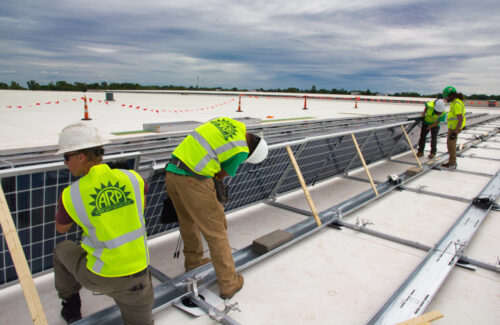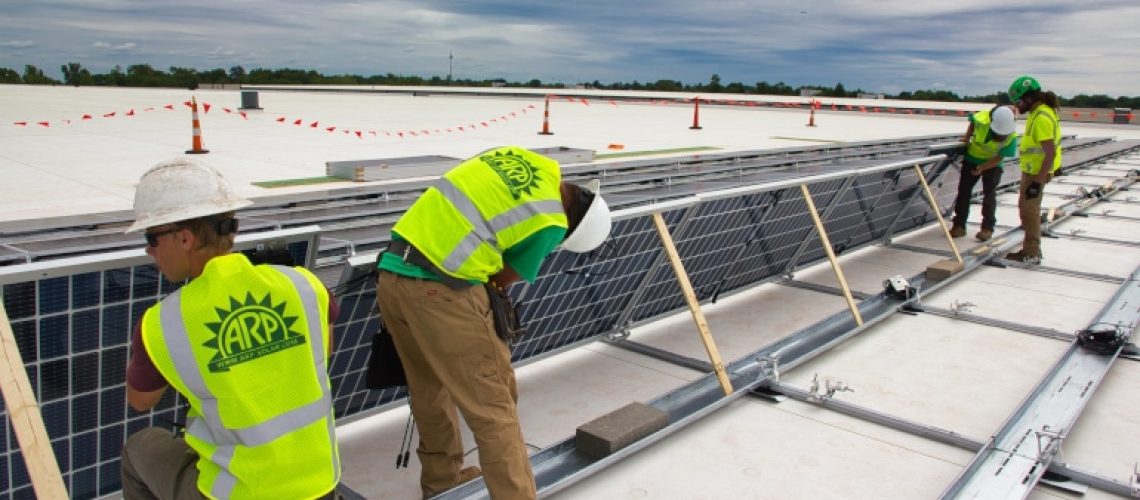The Biden Administration today put imported bifacial solar panels back under Sec. 201 tariffs, after the specialty solar panels enjoyed a two-year exemption from extra duties first initiated by President Biden in 2022.

Credit: Appalachian Renewable Power Systems (ARP Solar)
This decision is part of the President’s sole right to make changes to in-progress tariffs under Sec. 201 of the 1974 Trade Act, after the U.S. International Trade Commission (USITC) filed its midterm report in February this year. All imported solar panels (regardless of country of origin) are currently tariffed at 14.25% as a way to protect domestic solar panel manufacturers from cheaper product coming from overseas. Bifacial panels were originally exempt from the tariffs because there was no significant domestic manufacturing capacity of the specialty product. This caused more bifacial modules to be imported into the United States than monofacial panels, undermining the objectives of the original safeguard measure.
Data from Customs and Border Protection found that 7.3 GW of bifacial panels and 10.1 GW of monofacial panels were imported in 2020. During the period of January-June 2023, 12.4 GW of bifacial panels and 1.4 GW of monofacial panels were imported — an incredible flip in preference, with bifacial modules taking 81.6% of the imported module share. There are reports that bifacial modules account for nearly 98% of imports today.
Biden’s decision to reverse bifaical’s exemption was likely influenced by a recent petition to the U.S. Trade Representative by Hanwha Qcells and supported by fellow domestic manufacturers First Solar, Heliene, Suniva, Silfab, Crossroads Solar, Mission Solar and Auxin Solar. The manufacturers expressed that surging imports of bifacial panels were causing companies to rethink their domestic manufacturing plans, an effort personal to President Biden and encouraged by incentives in the Inflation Reduction Act.
Timothy Brightbill, partner at Wiley Rein and trade counsel to the American Alliance for Solar Manufacturing, provided a statement to Solar Power World after the midterm report was filed in February: “There have been numerous important announcements of new U.S. solar manufacturing capacity due to the Inflation Reduction Act. It is imperative that we rebuild the American solar supply chain and our leadership of this industry. However, all of these new plans are now being undermined and are at risk due to a global import surge and massive price reductions. According to most reports, prices are down 50% or more, and imports are at least double current demand, leading to stockpiling of solar panels in warehouses, where they will continue to depress the market,” he said.
The Biden Administration is providing a slight safeguard to bifacial importers. Those with pre-existing contracts for bifacial solar modules to be delivered within 90 days of today’s exclusion removal will be able to certify those contracts to continue using the exclusion for that period.
In addition to bifacial panels losing their exemption, the Biden Administration said it will raise the tariff-rate quota (TRQ) of silicon solar cells to 7.5 GW, if needed. Presently, the first 5 GW of silicon solar cells imported each year are exempt from tariffs, but the Biden Administration said it will now allow 7.5 GW through untariffed. U.S. panel assemblers only imported 3.6 GW of solar cells in 2023, but imports have increased in the first few months of 2024.
Mike Carr, the executive director of the Solar Energy Manufacturers for America (SEMA) Coalition responded to today’s news:
“We commend the Biden administration for closing the loophole in the 201 safeguard bifacial exemption that was opened in the previous administration. The 201 safeguard was so weakened as to be largely irrelevant through the bifacial exclusion. Lifting the exemption reinstates a 15% tariff, providing important, but sadly still insufficient, relief from anti-competitive trade practices until the tariff is set to expire in February 2026.”
Abigail Ross Hopper, president and CEO of the Solar Energy Industries Association (SEIA), released a statement:
“The administration took another step to support American solar module manufacturers by raising the Sec. 201 tariff rate quota on cells, as needed. This move provides an important bridge for module producers to access the supply they need while the United States continues to advance solar cell manufacturing. Today’s decision will help create a strong, stable module manufacturing sector that can sustain robust cell production in the long run.”




